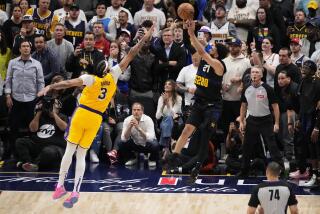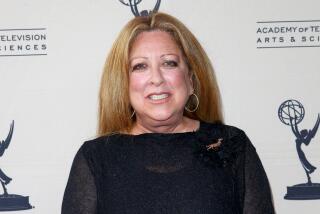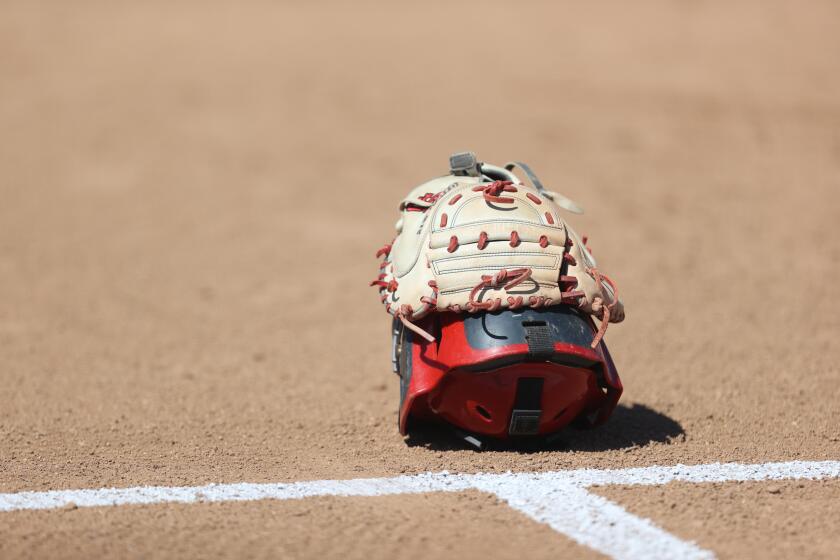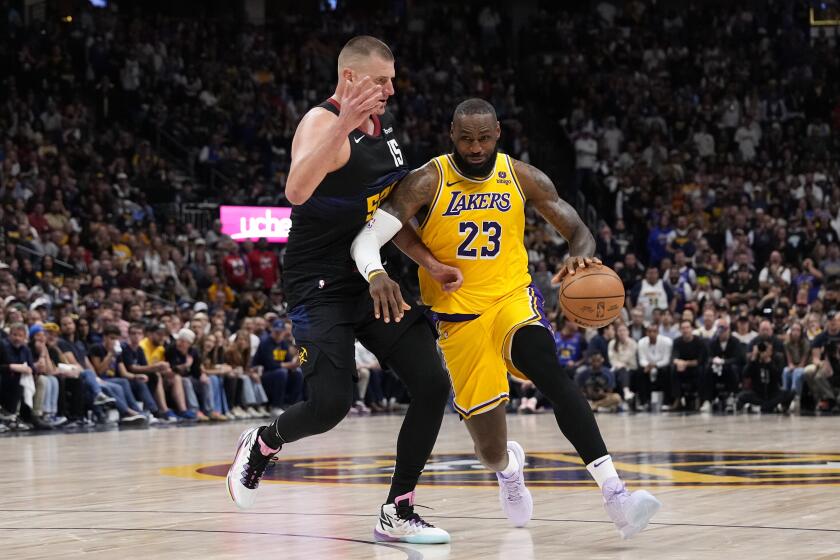Healing a 12-year split
U.S. open-wheel auto racing, made famous by the exploits of Andretti, Foyt and Unser but then devastated by a 12-year civil war between rival factions, agreed Friday to reunify the sport in hopes of stemming its decline.
The Indy Racing League and the Champ Car World Series said they agreed in principle to merge, after both struggled to maintain attendance, TV ratings and sponsors, especially in the face of NASCAR stock-car racing’s surging popularity.
IRL founder Tony George signed the pact, as did Champ Car principals Kevin Kalkhoven and Gerald Forsythe.
It was George who triggered the split by starting the IRL to protect the Indianapolis Motor Speedway, which his family owns, and the famed Indianapolis 500 race held each Memorial Day weekend.
“This is a very good day for American open-wheel racing,” said Chip Ganassi, who owns teams in the IRL and NASCAR. “We have a lot of work to do, but I can tell you that I am thrilled to get working.”
The merger was widely expected after both sides disclosed this week that they were attempting to reunite. Details of the pact weren’t disclosed.
But proposed plans call for the IRL to absorb several Champ Car teams and a few of its 14 scheduled races, including Champ Car’s marquee event, the Toyota Grand Prix of Long Beach, according to people familiar with the talks.
Both sides rushed to get the deal done before the start of the 16-race IRL season on March 29, at Homestead-Miami Speedway in Florida. The Long Beach race, which would have opened Champ Car’s season, is scheduled for April 20.
One sticking point in the merger talks was that the Long Beach race is scheduled the same day as an IRL race in Motegi, Japan.
The apparent solution is that the IRL drivers will compete in Japan, and the Champ Car drivers will race by themselves one last time in Long Beach while earning IRL points, said Jim Michaelian, chief executive of the Grand Prix Assn. of Long Beach, which operates the race.
“It is my understanding that we would be hosting what would be the final Champ Car race, and we look forward to being part of the IRL in ’09 and going forward,” he said.
Champ Car teams moving to the IRL also would receive free engines and chassis used in the IRL, and the same $1.2-million annual incentive programs offered to the IRL’s own teams as part of the merger. Champ Car race cars currently use a different engine and chassis.
“I’m glad that they were able to get it done,” said legendary racer A.J. Foyt, a four-time Indy 500 winner who also owns an IRL team. “It’ll eliminate the confusion for the race fans and the sponsors because there’ll be just one type of car and one type of motor.”
The IRL’s top drivers include former Indy 500 winners Helio Castroneves and Dan Wheldon. Danica Patrick, who gained instant celebrity after she nearly became the first woman to win the Indy 500 in 2005, also drives in the IRL.
But because of NASCAR’s dominance, several leading IRL drivers recently fled to NASCAR, including three-time IRL series champion Sam Hornish Jr. and last year’s Indy 500 winner Dario Franchitti.
With the merger, the IRL would gain such Champ Car drivers as Paul Tracy, a former series champion; Englishman Justin Wilson, and 19-year-old Graham Rahal.
Rahal’s father, Bobby, also is an IRL team owner and former Indy 500 winner. “I truly believe that this is the first step toward restoring open-wheel racing,” the elder Rahal said.
Open-wheel, open-cockpit racing was still the preeminent form of U.S. motor sports in the mid-1990s, nurtured by famous drivers as Foyt, Mario Andretti, Rick Mears and the Unsers. The single series then was called Championship Auto Racing Teams, or CART.
But George was alarmed that oval-track races such as the Indy 500 were losing their value as CART explored more races on twisty road courses and temporary street circuits. So George formed the IRL, forcing teams, racetracks and sponsors to choose sides.
CART later went into bankruptcy and was bought by its current owners, who renamed it Champ Car. In recent years they all but abandoned oval tracks, racing instead on road courses.
But both series suffered in popularity as NASCAR’s popularity grew. Last week’s Daytona 500 NASCAR race had a TV rating more than twice as big as last year’s Indy 500.
Now the newly expanded IRL will try to catch up.
Patrick, who drives for Andretti Green, said earlier this week that “I’m probably speaking for many people when we say it’s about time.”
The split has been “disappointing for a lot of people,” she said. “It’s distracted and taken away a lot of good sponsors that were discouraged by the split. Fans need something simple that’s easy to understand.”
--
More to Read
Get our high school sports newsletter
Prep Rally is devoted to the SoCal high school sports experience, bringing you scores, stories and a behind-the-scenes look at what makes prep sports so popular.
You may occasionally receive promotional content from the Los Angeles Times.






